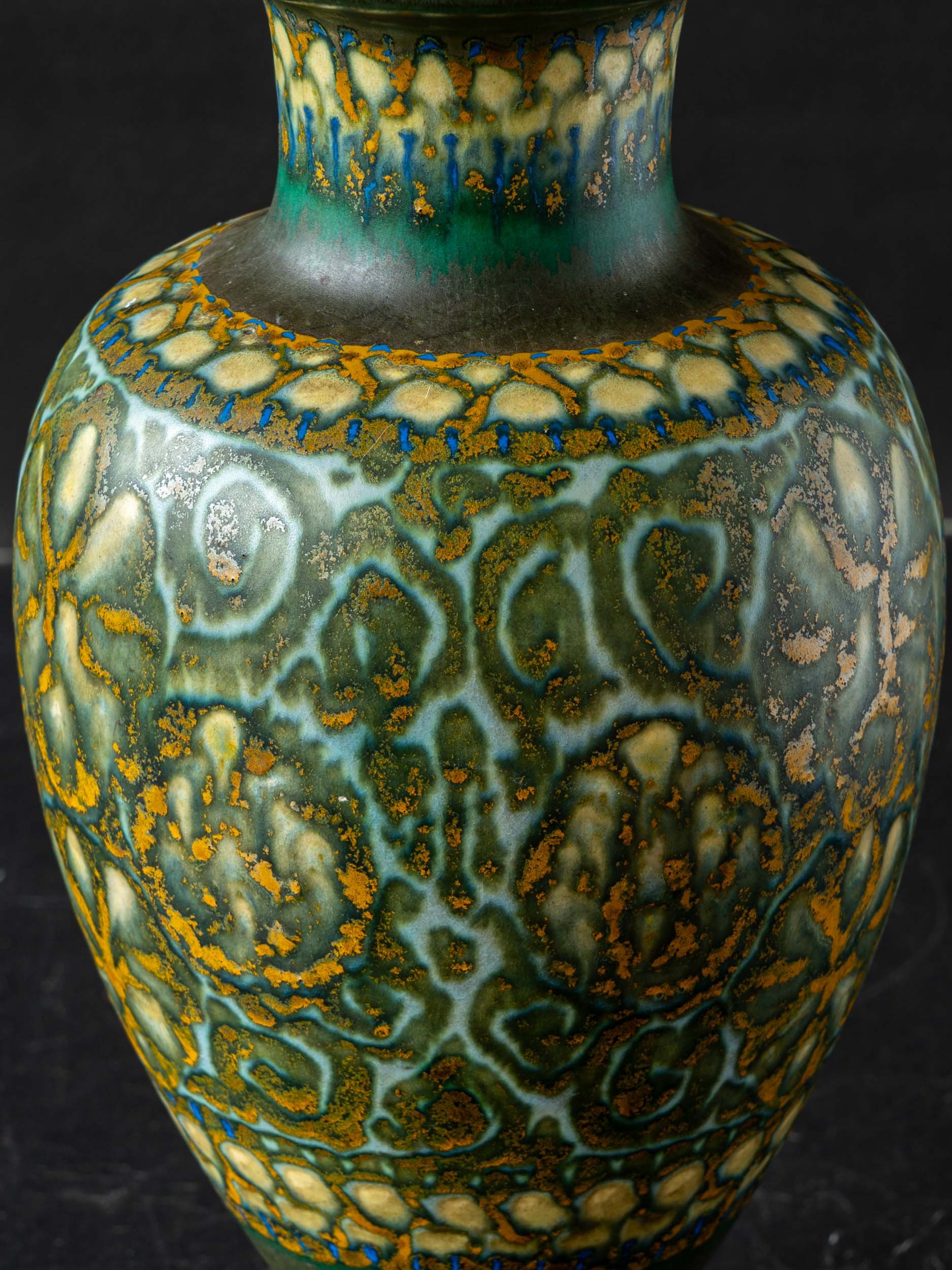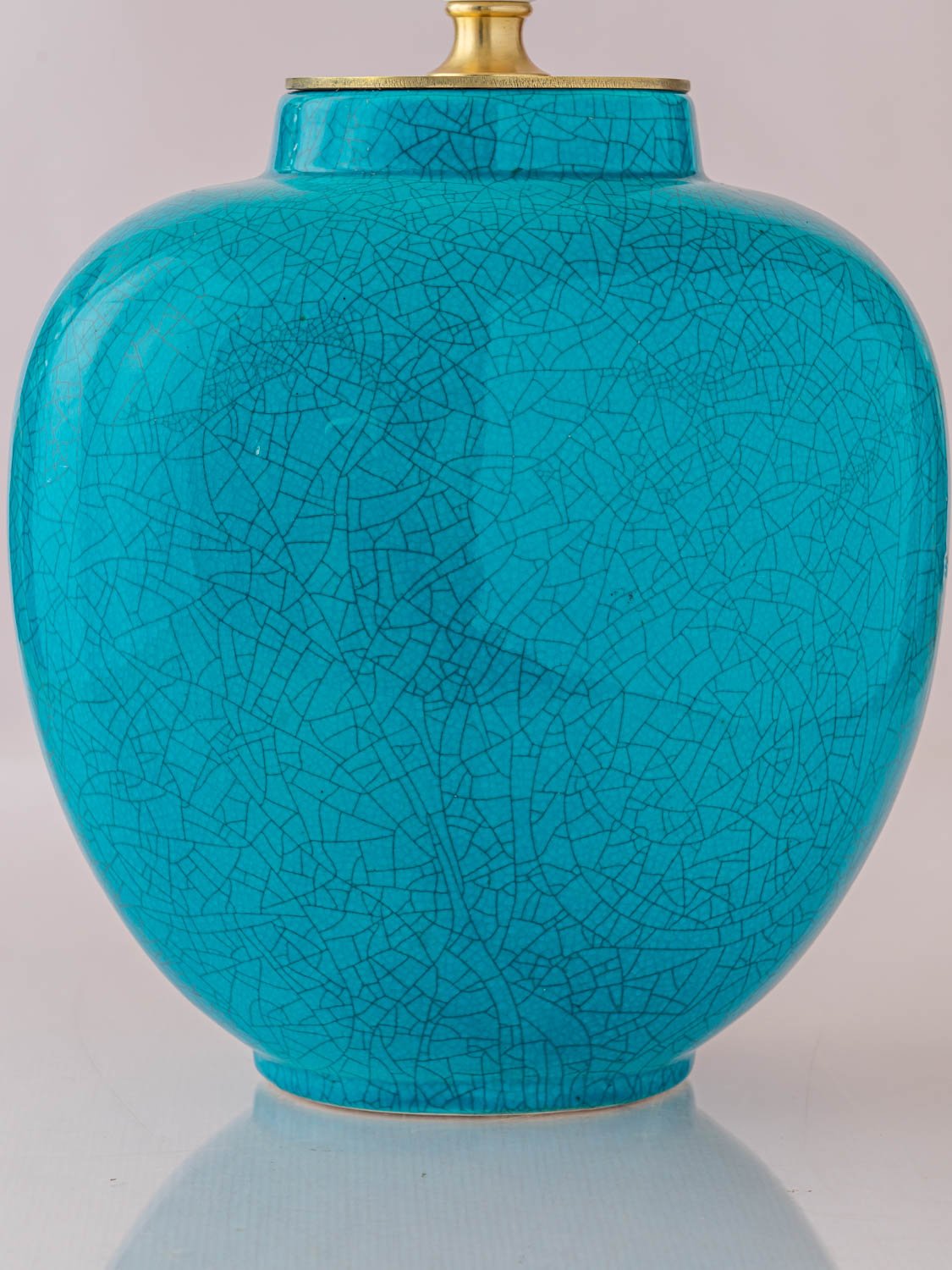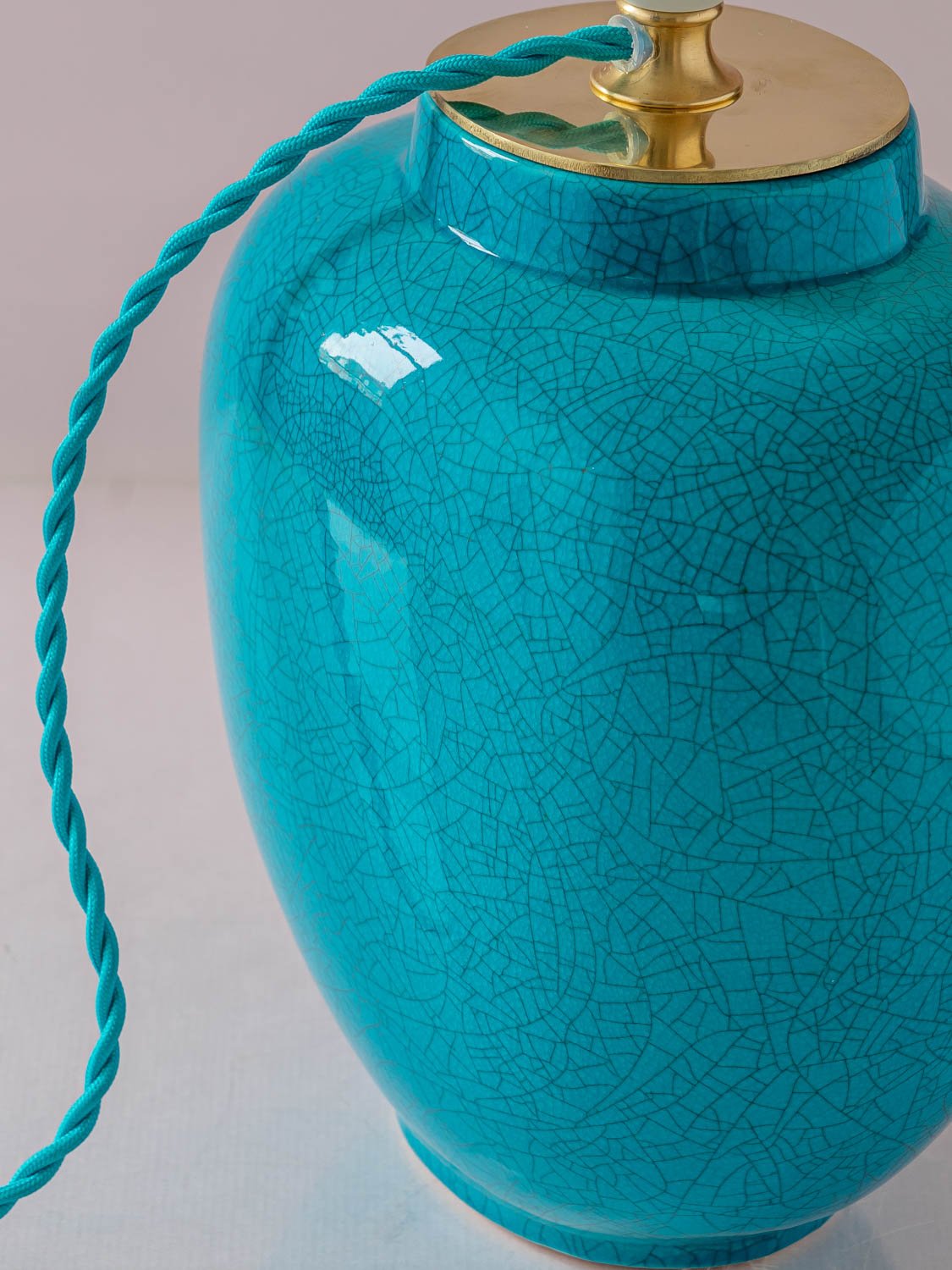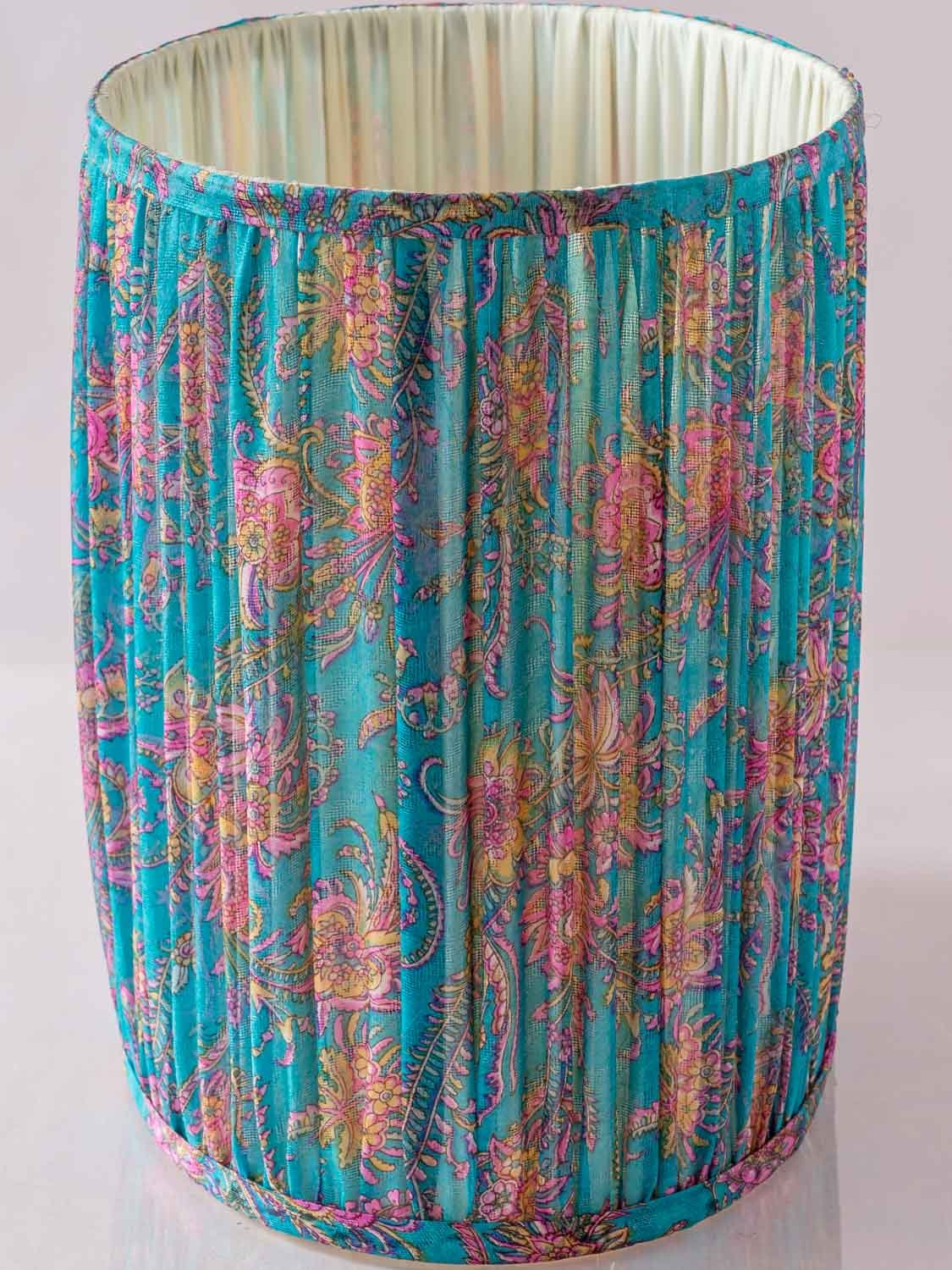 Image 1 of 10
Image 1 of 10

 Image 2 of 10
Image 2 of 10

 Image 3 of 10
Image 3 of 10

 Image 4 of 10
Image 4 of 10

 Image 5 of 10
Image 5 of 10

 Image 6 of 10
Image 6 of 10

 Image 7 of 10
Image 7 of 10

 Image 8 of 10
Image 8 of 10

 Image 9 of 10
Image 9 of 10

 Image 10 of 10
Image 10 of 10











Plateelbakkerij Zuid-Holland Gouda Antique Art Nouveau Table Lamp – Maya
Maya is a one-of-a-kind lamp lovingly handcrafted from an antique Plateelbakkerij Zuid-Holland (also known as Plazuid or PZH) Gouda vase. PZH was the first, the most important and the most iconic Gouda pottery factory. (See our blog post on Gouda pottery to learn more.) This vase was handmade & hand-painted there in 1921 according to the marking on the bottom. We’ve paired the base with a contemporary lampshade in a luxurious Murano Gold velvet with an inner platinum lining, custom made in an atelier near Amsterdam.
Height: 60 cm (23.5 in) with lampshade
Width: 32 cm (12.6 in) with lampshade
E27 bulb fitting. We can adapt the plug depending on the country you will use it in.
We ship worldwide!
*Please note that after the subtotal page, at checkout, 21% VAT will be applied for customers within Europe. Customers in the UK, USA, and other countries may be subject to local taxes and duties which are not included in our prices. Rates can differ widely based on your location, and we advise you to check with your local customs office for more information. We offer a variety of shipping options, ensuring you can choose the one that best fits your needs. If you have any questions, please do not hesitate to get in touch with us!
Maya is a one-of-a-kind lamp lovingly handcrafted from an antique Plateelbakkerij Zuid-Holland (also known as Plazuid or PZH) Gouda vase. PZH was the first, the most important and the most iconic Gouda pottery factory. (See our blog post on Gouda pottery to learn more.) This vase was handmade & hand-painted there in 1921 according to the marking on the bottom. We’ve paired the base with a contemporary lampshade in a luxurious Murano Gold velvet with an inner platinum lining, custom made in an atelier near Amsterdam.
Height: 60 cm (23.5 in) with lampshade
Width: 32 cm (12.6 in) with lampshade
E27 bulb fitting. We can adapt the plug depending on the country you will use it in.
We ship worldwide!
*Please note that after the subtotal page, at checkout, 21% VAT will be applied for customers within Europe. Customers in the UK, USA, and other countries may be subject to local taxes and duties which are not included in our prices. Rates can differ widely based on your location, and we advise you to check with your local customs office for more information. We offer a variety of shipping options, ensuring you can choose the one that best fits your needs. If you have any questions, please do not hesitate to get in touch with us!
Maya is a one-of-a-kind lamp lovingly handcrafted from an antique Plateelbakkerij Zuid-Holland (also known as Plazuid or PZH) Gouda vase. PZH was the first, the most important and the most iconic Gouda pottery factory. (See our blog post on Gouda pottery to learn more.) This vase was handmade & hand-painted there in 1921 according to the marking on the bottom. We’ve paired the base with a contemporary lampshade in a luxurious Murano Gold velvet with an inner platinum lining, custom made in an atelier near Amsterdam.
Height: 60 cm (23.5 in) with lampshade
Width: 32 cm (12.6 in) with lampshade
E27 bulb fitting. We can adapt the plug depending on the country you will use it in.
We ship worldwide!
*Please note that after the subtotal page, at checkout, 21% VAT will be applied for customers within Europe. Customers in the UK, USA, and other countries may be subject to local taxes and duties which are not included in our prices. Rates can differ widely based on your location, and we advise you to check with your local customs office for more information. We offer a variety of shipping options, ensuring you can choose the one that best fits your needs. If you have any questions, please do not hesitate to get in touch with us!
Like Delftware, Gouda pottery is a style of Dutch applied art with a fascinating history. It gets its name simply because many factories working in this style were in Gouda, mainly due to the fact that the area was rich with clay. Many designers actually moved to Gouda to work in these factories. Gouda pottery, at its peak, was largely championed by the company Plateelbakkerij Zuid-Holland (1898-1965)—also known as Plazuid or PZH, Gouda Art Pottery Works—which was hugely popular from 1900 through the first half of the 20th century. Founded in 1898, they primarily made Art Nouveau and Jugendstil style pottery for their first twelve years, which was in vogue. However, they had the vision of introducing a new style to shake up the market and to satisfy the changing tastes of the public, which they achieved in 1909 with the introduction of a “matte-glaze” technique. This was a big shift for both PZH as well as Gouda pottery as a whole—in fact, Gouda pottery is often known for its appearance after 1909. Although it is a somewhat straightforward idea, matte-glaze was a definite shift in style and along with this PZH also introduced new shapes and patterns designed by Daniel Harkink who was inspired by ancient Persian/Iznik, Cypriot and Rhodian ceramics. These unique designs along with the matte-glaze resulted in the most iconic Gouda pottery.













